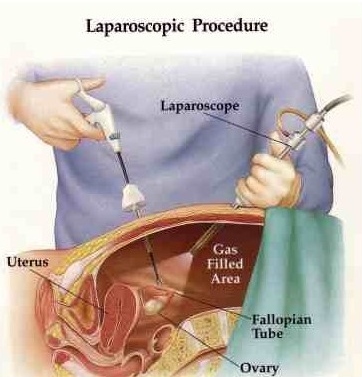
Laparoscopy is an alternative to open surgery. It uses a laparoscope to look inside your pelvic area. Open surgery often requires a large incision.
A laparoscope is a slender, lighted telescope. It allows your doctor to see inside your body. Diagnostic laparoscopy can determine whether you have conditions such as endometriosis or fibroids. It can also be a form of treatment. With miniaturized instruments, your doctor can perform a variety of surgeries. These include:
Laparoscopy generally has a shorter healing time than open surgery. It also leaves smaller scars.
Reasons for laparoscopy
Laparoscopy can be used for diagnosis, treatment, or both. A diagnostic procedure can sometimes turn into treatment.
Some reasons for diagnostic laparoscopy are:
Conditions that might be diagnosed using laparoscopy include:
Some types of laparoscopic treatment include:
Procedure
Laparoscopy is almost always performed under general anesthesia. This means you’ll be unconscious for the procedure. However, you may still be able to go home the same day.
Once you’re asleep, a small tube called a catheter will be inserted to collect your urine. A small needle will be used to fill your abdomen with carbon dioxide gas. The gas keeps the abdominal wall away from your organs, which reduces the risk of injury.
Your surgeon will make a small cut in your navel and insert the laparoscope, which transmits images to a screen. This gives your doctor a clear view of your organs.
For diagnosis, your doctor might take a look and then be done. If you need surgery, other incisions will be made. Instruments will be inserted through these holes. Then, surgery is performed using the laparoscope as a guide.
Once the procedure is over, all instruments are removed. Incisions are closed with stitches, and then you’re bandaged and sent to recovery.
Advances in laparoscopy
Robotic surgery is sometimes used for gynecological laparoscopy. Robotic arms are steadier than human hands. They may also be better at fine manipulations.
Microlaparoscopy is a newer approach. It uses even smaller scopes. This procedure can be done with local anesthesia.
Common procedures